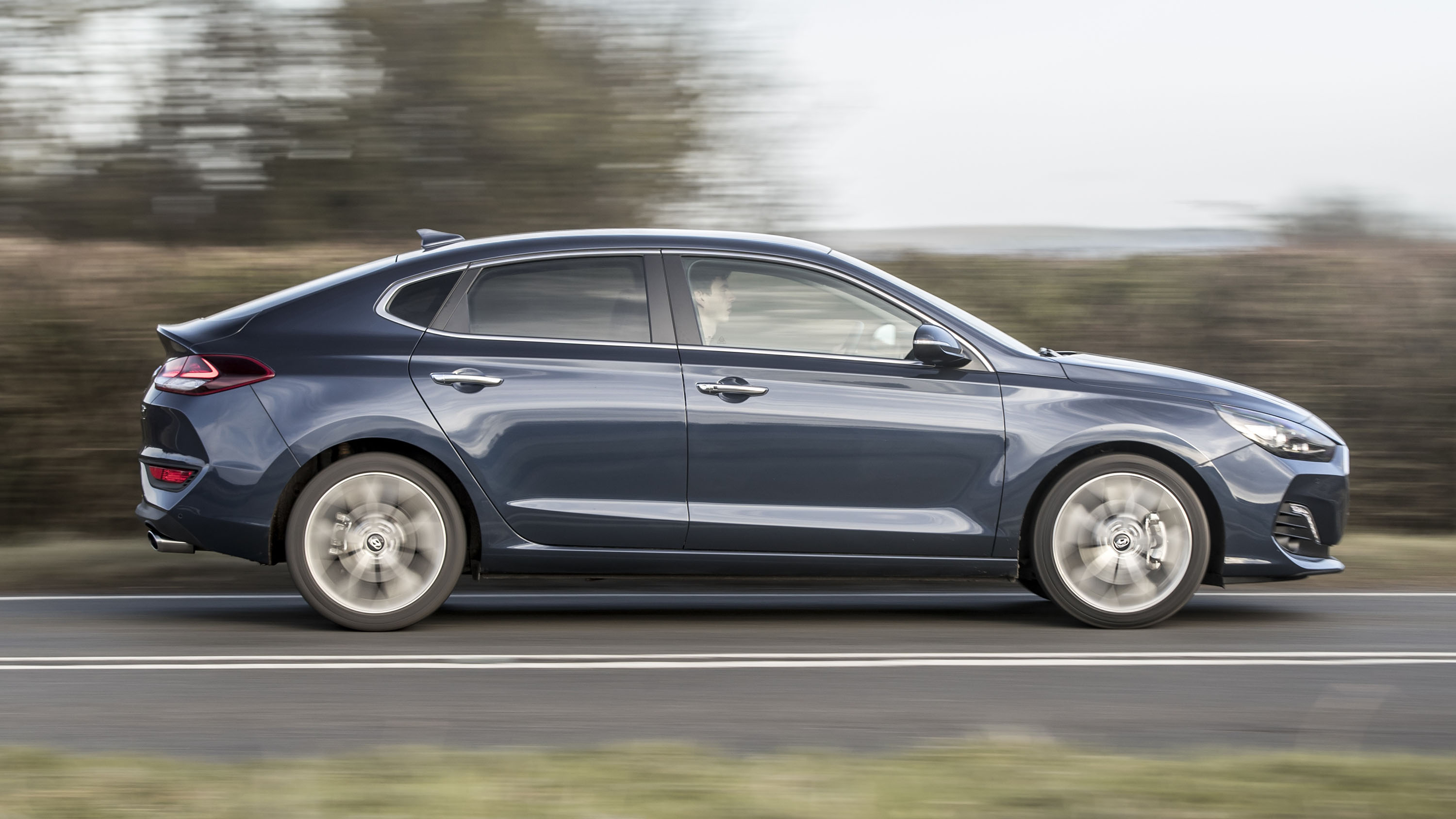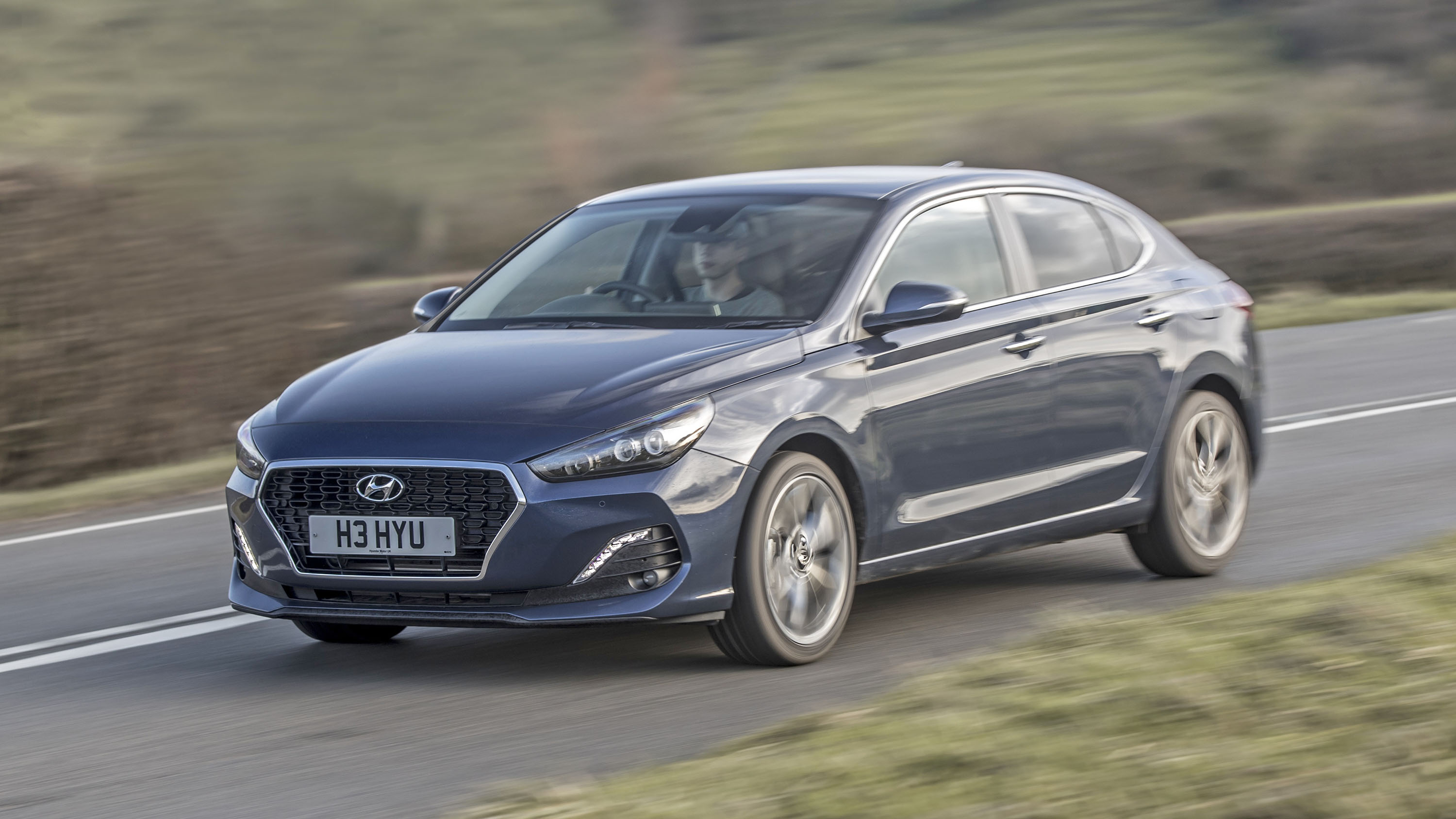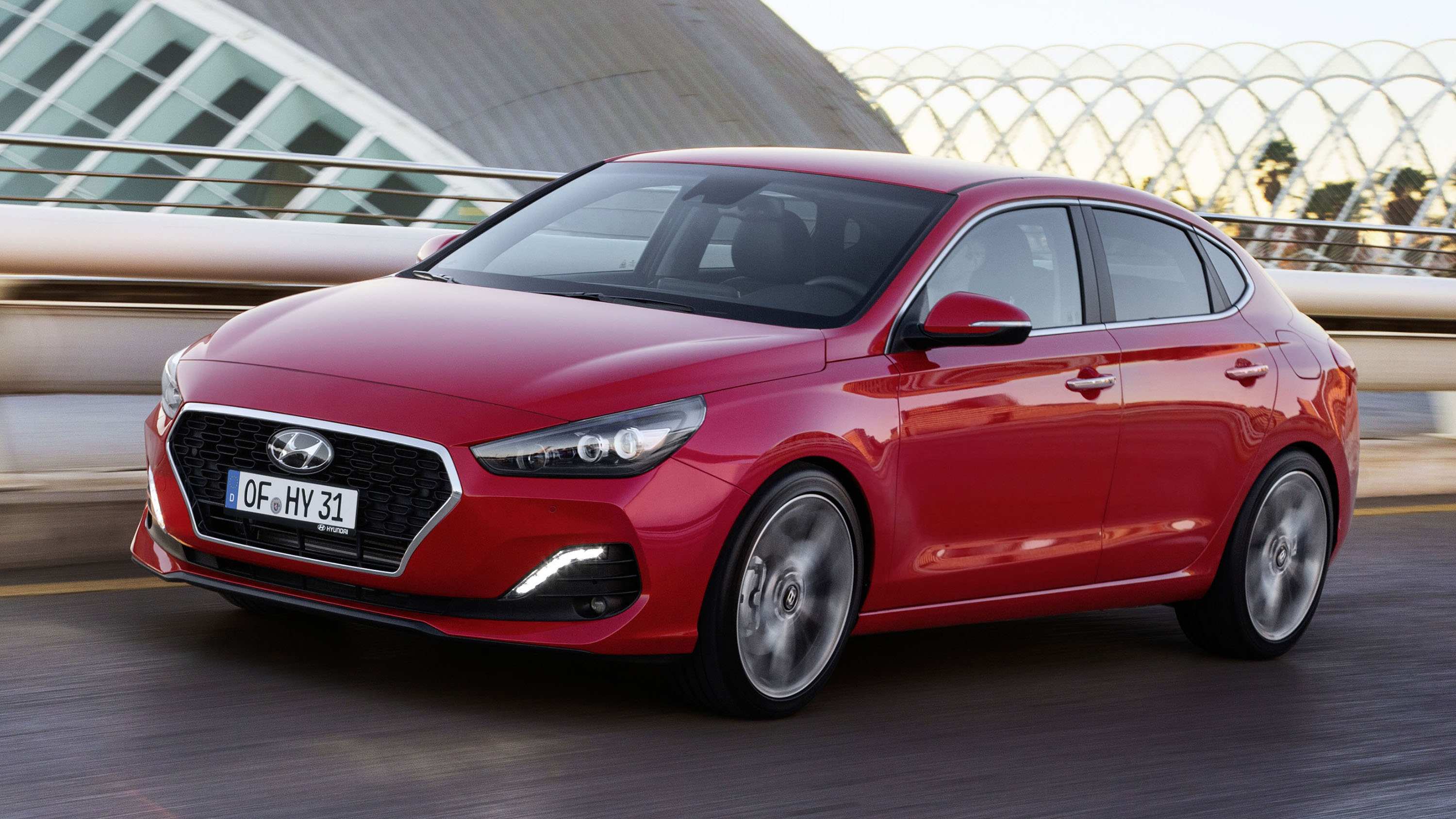
SPEC HIGHLIGHTS
- BHP
140bhp
- 0-62
9.2s
- CO2
132g/km
- Max Speed
129Mph
- Insurance
group14E
An i30 Fastback? What’s that, then?
It’s the glorious return of the small saloon car. Back in the 1990s just about every five-door hatchback had an awkwardly proportioned four-door relative. Pop Peugeot 306 saloon or mk1 Ford Focus saloon into an image search, and revel in how the cohesive looks of their base cars were royally mucked up.
The Hyundai i30 Fastback doesn’t fall into the same trap, though; rather like the pricier Audi A3 saloon, it looks to have been designed that way from the outset. Yet it’s still a five-door; this is a saloon in the same way something like a BMW Gran Coupe or VW Arteon is. It’s designed to have the more sophisticated looks of a four-door without losing the practicality of a hatchback.
Mind, the i30 has a slim rear window with no wiper, while its falling roofline means six-footers will be struggling for headroom in a way they might not in a regular i30. You get an extra 50 litres of bootspace in the Fastback, though.
Does it live up to its name? Is it actually fast?
That all depends on which one you choose. It uses the turbocharged petrol engines on offer in the i30 hatch and estate (though not, for now, any of their diesels). You’ve a choice of a 118bhp 1.0-litre three-cylinder or a 138bhp 1.4-litre four-cylinder. Both have a manual gearbox as standard; the latter can be specced with a twin-clutch automatic.
With such similar power outputs, their performance and economy are broadly similar, too; the 1.4 is marginally quicker to 62mph, at 9.2secs, while the 1.0 is a little bit thriftier, claiming 54.3mpg.
So no, it’s not exactly fast. But both engines are pretty pleasant, and they drop away into the background entirely when you’re not accelerating. The 1.0 makes a more fun noise, but the 1.4 will make lighter work of moving the Fastback around. Assuming this is meant to be a wee bit more premium than the hatchback, it’s probably the one you want. Unless Hyundai’s engineers surprise us by making a 271bhp N version…
Will they?
Who knows. The base i30 feels like a thoroughly developed car, though, with a good ride and handling balance, decent steering and a pleasingly taut gearchange. It’s a simple and effortless car to drive.
Top Gear
Newsletter
Thank you for subscribing to our newsletter. Look out for your regular round-up of news, reviews and offers in your inbox.
Get all the latest news, reviews and exclusives, direct to your inbox.
If you think ‘effortless’ sounds like a polite paraphrasing of ‘dull’, you’d be half right. Hyundai’s clearly developed non-N i30s to drive in a calming manner, and while they’re polished things to drive, they don’t goad you into driving the long way home. You’re unlikely to ever go looking for their grip limits.
With the Fastback, perhaps there was an opportunity to loosen the shackles a bit. But when the i30 N hot hatch is so reasonably priced – starting at around £4k more than an entry-level 1.0 Fastback – Hyundai’s already catering for those of us more eager to have fun in a car.
Is it better than the five-door?
It’s different. And ultimately, that’s what’s refreshing about it. The proliferation of little SUVs (Hyundai does those too) means the saloon car appears to be approaching its best-before date with startling rapidity. It’s quite nice to see someone give it a new vote of confidence, even if this isn’t strictly a four-door.
At £500 more than the i30 hatchback, it’s also not much dearer if you’re seeking something a bit more interesting to look at. Mind, if Hyundai gave it the full performance treatment, we’d probably be fully convinced. Given N division boss Albert Biermann hails from BMW’s M division – and therefore has a history chockful of highly powered saloons – there’d be something satisfyingly full-circle about that…
7/10
Featured

Trending this week
- Car Review
Renault Clio






